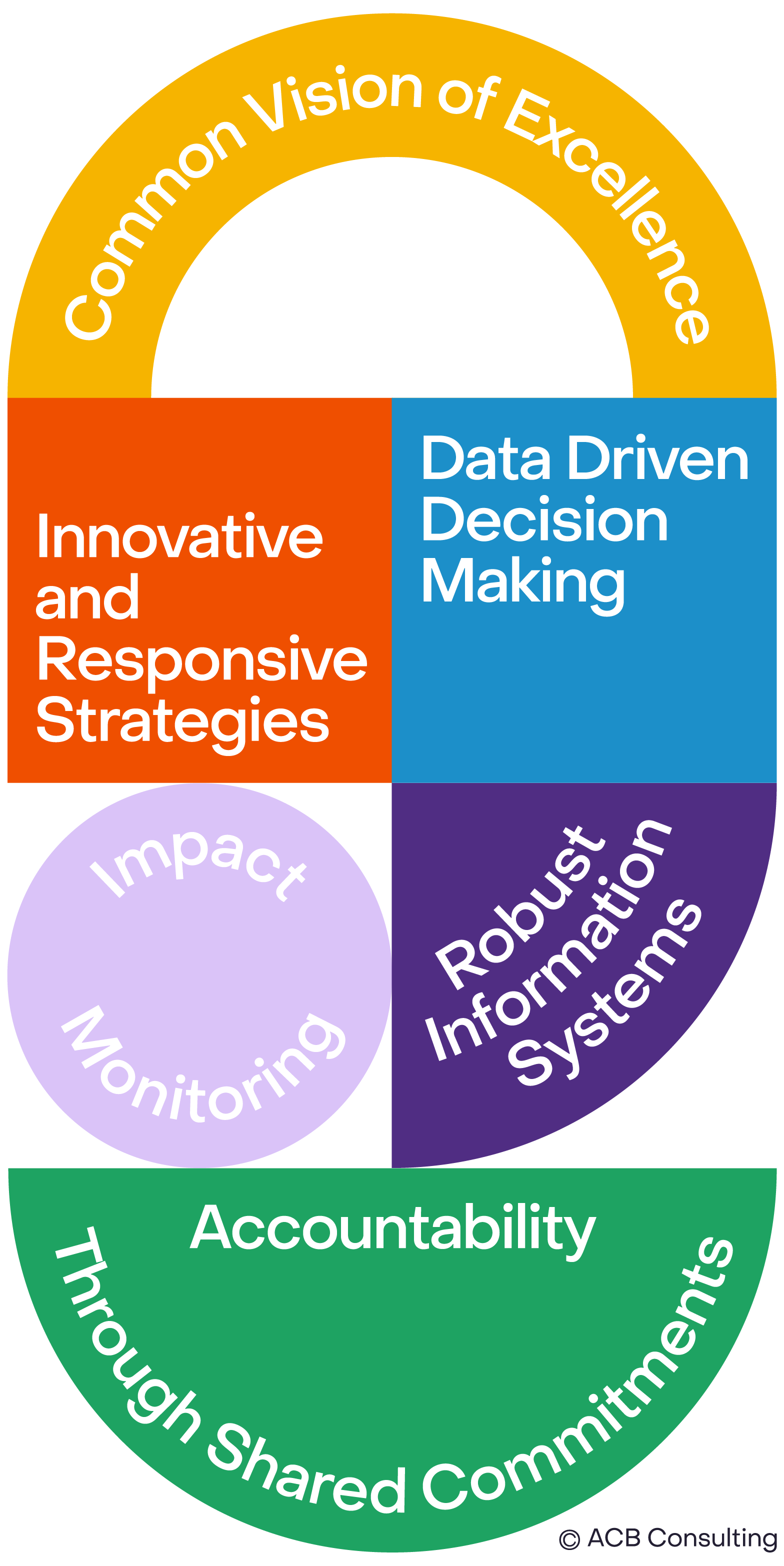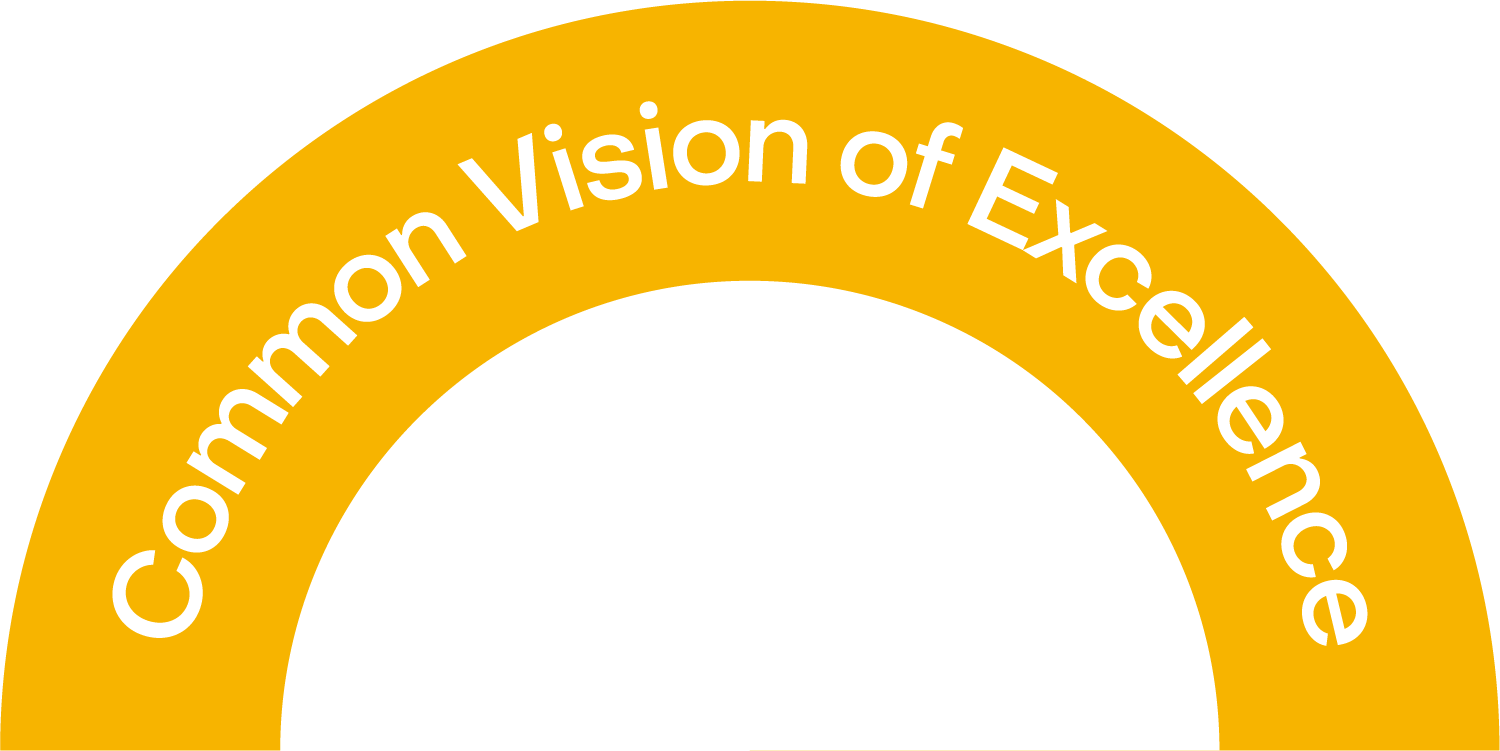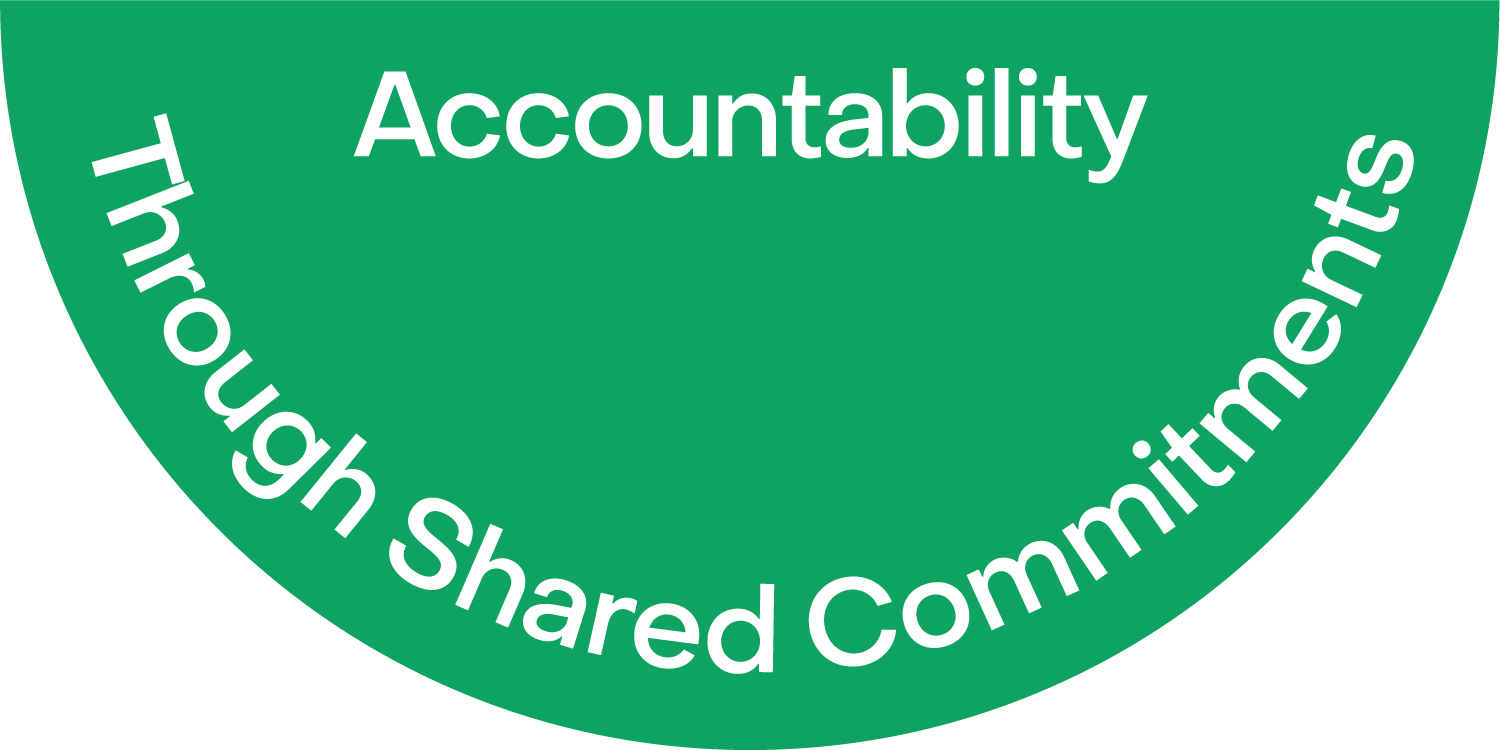A Comprehensive Approach to Authentic Student Engagement
In reading this article, it is essential to recognize that schools and classrooms are systems. This allows us to apply the Six Building Blocks Framework as a theory of action to continually refine approaches to learning and success for all students.
Authentic student engagement is critical for learning to take place. In education, initiatives and terminology take hold and are often used without a clear understanding of what they mean. Engagement is one of those terms.
Therefore, the first step in building a highly engaged classroom is to develop a common vision and expectations for student engagement among educators and students.
Articulating what student engagement looks like and what it sounds like makes it explicit in a way that invites students to understand the common vision and take ownership and accountability for their own learning.
Once the definition of student engagement is established, it becomes the goal for every lesson. Therefore, the activities and assignments must intentionally reflect the attributes defined in the common vision. Lesson design clearly articulates the strategies that will be used to ensure students are engaged in learning.
Using two-way methods of information sharing with students (and parents) fosters a sense of belonging and community around shared goals.
An inquiry cycle of planning lessons, implementing the activities, analyzing student work and assessment data, and determining priorities for future learning, incorporates data-driven decision making and impact monitoring. These cycles and reflection on the implementation of lessons are critical to student learning and the continuous refinement of
A Common Vision of Excellence
Lesson design and implementation of the lesson plans with the goal of engaging students requires clarity on the attributes of student engagement. This clarity ensures that the learning outcomes, activities, assignments, and methods for assessing student learning are designed to elicit the defined attributes.
There is extensive research and theory on student engagement, and in general, the attributes come down to the following:
Students are required to think, and lessons allow time for student reflection to answer questions and share what they have learned.
Students work collaboratively, answering questions or solving a problem.
Students can access the content; there is an entry point for every learner through scaffolding or differentiation.
Students have choice or discretion in how they get to the learning outcomes.
The content is delivered in a way that allows students to make connections to prior knowledge, lived experiences, or relevance to the world around them.
It is not enough for the teacher to have clarity on the attributes of student engagement. Students themselves should be invited to reflect on past learning experiences and have input into ways the classroom culture can foster authentic engagement. Inviting students to share what helps them to be intellectually challenged fosters psychological safety and risk taking.
Students can consider how they might push their own thinking and set learning goals. These practices foster learner agency, with students taking ownership of their progress and a culture where making mistakes or asking for help are valued and reflect a genuine commitment to learning.
Considerations for A Common Vision of Excellence
Create a simple definition of engagement that can be shared with students.
Incorporate at least one attribute of student engagement into every lesson.
Check in with students regularly to get their perspectives on their engagement level and learning.
Data Driven Decision Making
Learning is built on relationships. Students must feel connected to the information they are exploring and feel psychologically safe to take risks and even make mistakes as a part of the learning process.
Student engagement requires students to expend intellectual energy and apply critical thinking and problem solving skills. Rigor, as defined by Edutopia, “is the result of work that challenges students’ thinking in new and interesting ways.” Given the variety of students' backgrounds and foundational knowledge and skills, the rigor of a task will depend on what students already know, what they can do, and their self-perceptions of their abilities.
Given the importance of relationships and the need to calibrate students' previous knowledge with new concepts to ensure rigor, teachers need to gather as much information, or data, about students as possible. This knowledge can inform lesson design and engage students in learning. Knowing about students' interests, baseline understanding of concepts, and proficiency in prerequisite skills can ensure the learning is relevant and builds on what students already know.
Going deeper to understand students' confidence in their abilities and the ways they prefer to learn or process information is essential in creating an engaging learning environment. Getting to know students and allowing students time to learn about each other fosters a sense of belonging, which is critical for collaborative and engaging learning.
Without this data, even activities designed to promote critical thinking may not be at a level that allows a student to engage with the content. Authentic student engagement is unlikely if the concepts are beyond a student’s ability to access the learning or the student has already mastered the content.
Finally, engaging students in the data collection process by providing opportunities for goal setting and self and peer assessments fosters learner agency and reinforces a shared commitment to learning.
Considerations for Data Driven Decision Making
Incorporate learning about students as part of the learning process.
Be sure students have the prerequisite skills necessary to engage in the learning task.
Provide opportunities for students to reflect on data and set learning goals.
Innovative and Responsive Strategies
Effective lesson design focused on authentically engaging students in learning includes activities and assignments that require students to make meaning of the content. For example, asking open-ended questions and inviting students to make predictions, hypothesize, and compare outcomes to those predictions.
Student collaboration and discussion on assignments promote critical thinking and opportunities for discourse. Creating an argument based on the content and backing up claims with evidence to support their ideas allows students to make their thinking visible. Opportunities to share and learn about others’ opinions and perspectives foster the development of social and emotional competencies that prepare students for opportunities beyond the classroom, in college, and in career pathways.
Engaging the class using strategies that require simultaneous engagement reinforces a classroom culture where learning is valued, and student efforts are celebrated. For example, activities where all students are required to participate, rather than calling on students individually or asking a few students to respond to a question or prompt, convey that everyone is required to think and that their ideas are important.
Creating meaningful context and connections that allow students to organize new ideas into existing schemas promotes a deeper level of learning and increases the relevance of the content. Exhibiting enthusiasm for the subject matter and helping students understand why the information is important helps foster authentic buy-in.
Teacher clarity about the content and students’ interests and competencies is directly connected to the effectiveness of strategies. This clarity allows the teacher to make explicit connections between the activities and the learning outcomes and ensure that the tasks are differentiated so that all students can access the information and extend their thinking, regardless of prerequisite knowledge and skills.
Considerations for Innovative and Responsive Strategies
Ask students to answer open-ended questions or solve problems and then explain their answers with evidence that supports their thinking.
Create opportunities for students to collaborate and work together.
Foster collective engagement that involves all students versus one student at a time.
Impact Monitoring
Regular cycles of inquiry to reflect on the effectiveness of instruction are necessary to ensure students are authentically engaged in learning. Often, instructional strategies are implemented, and curriculum benchmarks are achieved with little to no time built in for teachers to review how a lesson went. Time to consider, for example, how the students responded to the activities, the grouping of students, or the pacing of the lesson, which can inform refinements to future lessons.
An effective inquiry cycle includes the following four steps:
Developing a plan
Implementing the plan
Reflecting on the plan and identifying what worked and what might be improved
Implementing refinements in future lessons
Cycles of inquiry can be used to measure impact, driven by examples of student work and formative assessment data. More formally, giving students an exit ticket or a reflective question at the end of the lesson provides an efficient way to assess each student’s understanding of the lesson. This information can help to know how the day’s instruction impacted students’ learning and informs what adjustments need to be made. Anecdotal and formative assessment data can also help a teacher understand how the materials, resources, and student groups support student learning.
In most cases, teachers reflect on the lesson in real time, monitoring students' levels of enthusiasm, responses to questions, and their approaches to activities. Simply moving around the room to see how students answer questions and engage with peers allows the teacher to keep a “finger on the pulse” of the class. A teacher can determine if directions are clear and if students grasp the content. This also allows for timely adjustments, redirection, and individualized support for students.
Finally, building time for students to share reflections allows them to reflect on their learning and consider what questions they might like to explore further. It provides valuable information for teachers to assess the impact of their instruction and the implications for future lessons.
Considerations for Impact Monitoring
During the lesson, monitor how students engage in the learning task to ensure clarity of directions and determine the need for real time adjustments to increase engagement.
Build in time to reflect on lessons, review student work samples, formative assessment data, and exit tickets, and make needed refinements for remediation or extension of learning.
Robust Information Systems
Robust information systems are the lifeline of the classroom. They ensure everyone has the same understanding of what is expected and how they contribute to the environment. This information system should be two-way, meaning the teacher not only provides direction and information but also has established mechanisms to receive feedback and questions from students regularly.
Working with students to review their assignments, grades, and learning goals provides feedback to students on their progress and reinforces expectations. At the same time, students are afforded the opportunity to provide input on the classroom environment and instructional strategies they find most meaningful. These two-way communication channels allow teachers to refine their practice and make adjustments as needed to ensure the highest impact on students.
In addition to two-way communication systems with students, these structures should exist for parents and families. This allows parents the opportunity to ask questions and stay informed about their student’s progress. This can occur through a weekly newsletter, informal updates when students are struggling or to celebrate good news, one-on-one conferencing with students and parents, and explicit time for parents to contact teachers when they have questions.
Considerations for Robust Information Systems
Ensure information systems are clear and robust so that all students have a clear understanding of expectations, as well as their roles and responsibilities.
Create opportunities for students to review goals and provide feedback on their learning experiences.
Provide regular opportunities for two-way communication to engage families in understanding learning objectives and student progress.
Accountability Through Shared Commitments
Accountability is critical for authentic student engagement. Students must feel responsible for and committed to their learning and success. Without this commitment, work quickly becomes a matter of compliance. Students complete learning tasks to please the teacher or their parents, or simply to check a box, rather than out of genuine curiosity and desired expansion of knowledge. In other cases, students shut down and may experience frustration. The frustration results in apathy and withdrawal or defiance and pushback.
Compliance is often overlooked because students are working and appear to be engaged. Frustration, defiance, and pushback are frequently addressed through a consequence for misbehavior rather than a redesign or alternative approaches to building students’ confidence or providing differentiated tasks or resources.
When the classroom environment has established expectations for students and learning objectives are clear, the strategies to achieve goals and expectations create buy-in among students. For students to authentically buy into what is expected of them, they should have input, when appropriate, on what those expectations should be.
Expectations can include classroom routines, timelines for assignment due dates, rules around behavior and safety, and the standard of high quality work. Clearly defining and establishing the roles and responsibilities within the classroom fosters healthy and respectful interactions among peers. Creating a sense of belonging, ownership, and community in the learning environment provides space for students to feel responsible for their success and the overall success of the class.
Most importantly, the culture of shared commitments invites students to take ownership of their learning. They see value in tackling challenging content and rely on their peers for help. They seek out diverse perspectives to more fully understand the concepts they are exploring. In the end, the goal is not completing a task but the process of understanding new information and successfully finding solutions.
The shared commitments can be a tool for engaging parents and families, with students taking the lead in sharing information about what they are learning and their progress toward goals.
Considerations for Accountability Through Shared Commitments
Create opportunities for the shared establishment of expectations and goals.
Reinforce a positive classroom culture by reviewing roles and responsibilities of students regularly.
Provide opportunities for students to engage parents in understanding the learning goals and student responsibilities in the classroom.
About ACB Consulting
Ann Cummins Bogan has worked in education for over 30 years. Ann began as a teacher and taught in both a large urban school district and a small suburban school district. As a teacher leader, Ann was active in many school and district initiatives and worked as a mentor to support new teachers.
Ann’s partnerships focus on establishing innovative strategies to achieve school and district goals in a climate of uncertainty and unprecedented strains on the profession. This includes support at all levels of the system, from the classroom to the central office. Ann’s comprehensive approach recognizes that effective change requires a systemic perspective, resulting in sustainable and impactful improvements.
Ann has a Master’s Degree in The Art of Teaching and a Certificate of Advanced Study in Educational Leadership from National Louis University.








